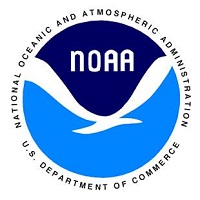In that track, Eddie Van Halen, played the guitar and made it sound like no one else had ever played it. He tapped the strings with his fingers in parts instead of just picking, he used the whammy bar to dive bomb notes, and he used amp distortion in a way that made the notes sing and do impossible things. Eddie Halen has said many times that he considers himself a tone chaser. In fact, the story behind music technology is often a back and forth between the technology chasing the tone and the tone chasing the technology.
Fender & Guitar Amp Technology
In 1938 Leo Fender opened a radio repair shop. Leo Fender would go on develop a number of inventions and designs related to amplifiers and electric guitars. Two of the three most common electric guitar body designs today are based on designs by Fender.
At that time, vacuum tubes were the cutting edge of electronic technology. Fender designed a guitar amp using vacuum tubes. It was a challenge because tube amps, particularly earlier tube amps, use a technology where hum and distortion can be a problem. The guitar pickups added noise, feedback. and hum. Fender designed an amp that worked to prevent this, creating amps that put out some of the best clean, undistorted tones on a guitar.
Now, when you want to design an amplifier, the two things you want to do is remove hum and distortion, particularly if you are using the amplifier to play back sound recordings. In general, a musician does not want the amplifier changing or distorting the sound of the recording.
Guitarists are not radio repair techs or sound engineers. Most of them just twist the dials on an amp until it sounds good, particularly back in the day. If they were sound engineers, they would explain that a guitar amp is actually two amps: a preamp that boosts the signal of the guitar input from the pickup to an ideal level for the second amp, the power amp, to amplify the signal for the speaker of the amp.
If the input level is too low, the power amp needs to be turned up louder to get the same level of amplification. The louder the input level the less hard the power amplifier has to work. The reason it is so important for an amplifier not to have to work so hard is that the amplifier not only amplifies the sound, it amplifies the noise and hum of an input as well. Also, the louder the amplifier, the more distorted it tends to get, particularly with tube amps.
Different guitar pickups have different signal levels. By adjusting the preamp you can adjust the input level to the optimal level. Both guitar pickups and microphones use preamps to adjust their input level or their level of sensitivity. There is a knob on a guitar amp called “gain” which controls the preamp volume and then a knob marked “volume” that controls the power amp level. Gain is equivalent to the recording level on a sound recorder.
You might think that that was a lot of explanation when you could just turn the knobs around on an amp until it sounded ok. This is what most guitar players of the 1950s did. Crank up the gain on an amp too high, you get distortion. The power amp amplifies that distortion so as you turn up the power amp more, it amplifies the distortion more and adds it own distortion to the distortion. This means by fiddling with the two knobs you can go from a very clean signal to a very distorted signal.
Transistors & Solid-state Electronics
While all this was going on, the transistor was invented at Bell Labs in 1947. The transistor was invented as a replacement for the vacuum tube, and is considered to the beginning of solid-state electronics. When we use the terms semiconductor or chip, we are talking about solid-state electronics. Because almost all electronics are solid-state now, we do not use the term as much. We might refer to something as having tubes in it now, but back when vacuum tubes where the main technology, people referred to electronics without tubes as solid-state, because that was the new and unusual thing.
Solid-state guitar amps are great at creating clean, undistorted tones. The problem is that the “disadvantages” of the vacuum tubes produce the great distorted tones that cannot be fully reproduced with solid-state or digital technology. The distortion on tube amps is quirky and responds to how a guitarist plays the guitar in ways that are hard to or impossible to entirely reproduce in a solid-state amp.
Leo Fender and others spent the first part of amplifier history chasing the perfect clean tone for an amplifier with technology that wanted to distort the sound. Meanwhile, guitar players started experimenting with distorted sound from the amplifiers, because they liked what they heard. They realized that some of the best tones on an electric guitar are distorted to some degree even if it is just slightly.
Eddie Van Halen
During the 1960s and 1970s, vacuum tube technology was being replaced by solid-state technology. While Eddie Van Halen is often credited with saving the electric guitar in rock music, no one seems to mention that he also may have had a part in saving tube technology from the junk heap as well. You see, the main place where vacuum tubes are still used today is in guitar amps.
Fast forward back to 1978 and Eddie Van Halen was using a whammy bar of a design created by Leo Fender along with the distortion from a tube amp and finger tapping that was being used by Emmett Chapman, inventor of the Chapman Stick, in the late 1960s. Eddie Van Halen’s big moment when he saved the electric guitar was forty years in the making and partially based on what was once considered a weakness in the technology.
What is the Difference?
To get an idea of the difference between tube and solid-state guitar amps, you can go to a flooring store and look at the different types of wood and artificial wood flooring. At one end you have real wood flooring — solid wood that has all the benefits and drawbacks of real wood. Next you have various engineered wood flooring which might be real wood on the top, but underneath is made of composite material or a cheaper type of wood, etc. Finally, you have laminate flooring made of manufactured materials.
The best laminate flooring is often hard to tell from real wood, so many people would not notice the difference at first. However, if you stand and look at a laminate floor for a while, you will start to notice that some planks have the exact same wood grain. This is because manufacturers make only a half dozen plank variations.
In a real wood floor, each plank is unique. The same is true of tube amps and solid-state amps and digital modelling amps. Digital modelling amps may use computer technology to try to reproduce tube distortion, but you tend to end up with the tonal equivalent of a laminate wood floor.
The digital world is clean and precise, but it is also pixelated and predictable. The analog world is warm, fuzzy, less predictable and has smooth slopes instead of stair stepped ones and zeros. This is one reason that you might hear of some electronic device that uses an analog solid-state circuit instead of a purely digital one.
Sometimes we discover an old technology is better for a particular application and other times we get ideas from old technologies on how to implement new technologies.
Korg, the synthesizer company, developed an electronic component they call a NuTube. A NuTube is basically a solid-state tube, a semiconductor that is designed to behave like a vacuum tube.
The jury is still out on whether a NuTube is as good as a vacuum tube for a guitar amp, but the results the NuTube have gotten so far look promising and seems to be one of the better attempts at a way to emulate a vacuum tube amp with solid-state technology.
–Dean McIntyre, May 28, 2020








 undergraduate and graduate programs from member universities
undergraduate and graduate programs from member universities



